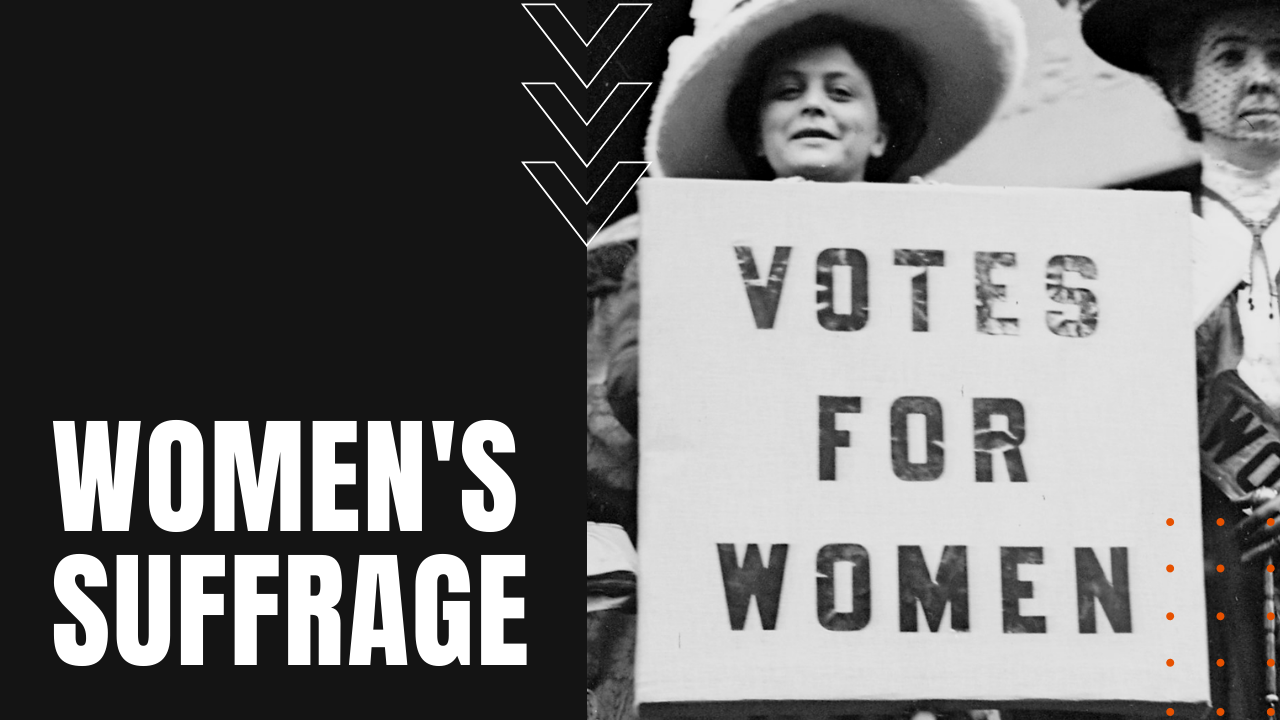Women’s Suffrage: Movement Towards Gender Equality in Voting Rights

When was Women’s Suffrage?
The nearly 100-year struggle for women’s suffrage in the United States began in the 1820s—a time rich in religious and moral reform groups—which in combination began a rethink of what it meant to be a female citizen in America.
The issue of women’s suffrage smoldered on for years, until in 1848, the first women’s suffrage convention was held in Seneca Falls New York, where reformers like Elizabeth Cady Stanton and Lucretia Mott penned the convention’s Declaration of Sentiments, which declared:
“that all men and women are created equal, that they are endowed by their creator with certain inalienable rights, that among these are life, liberty, and the pursuit of happiness.”
Seneca Falls Convention Declaration of Sentiments
14th and 15th Amendment Reignite Suffrage Movement
The issue of women’s suffrage lost momentum during the Civil War, only to reignite when African American men were granted the right to vote with the ratification of the 14th and 15th Amendments.
While early rationale in the women’s suffrage movement argued that women deserved the same rights and responsibilities as men, after Elizabeth Cady Stanton and Susan B. Anthony founded the National Woman Suffrage Association in 1869, their new argument was that the female vote would create a morally pure “maternal commonwealth.”
A breakaway pro-15th Amendment faction formed a second organization called the American Woman Suffrage Association, insisting that too much focus on women’s suffrage could derail the voting rights gains for African American men, until the two groups resolved their differences in 1890 with the formation of the National American Woman Suffrage Association or NAWSA, voting Elizabeth Cady Stanton as the organization’s first president.
Women’s Suffrage Movement, Momentum and Amendment
Beginning in 1910, the Association’s state-by-state push for women’s suffrage began to bear fruit out west, where Idaho and Utah gave women the right to vote, despite ongoing resistance by southern and eastern states.
in 1916, nearing the end of the decades-long Progressive Era, NAWSA president Carrie Chapman Catt unveiled the organization’s new “Winning Plan” of a blitz campaign mobilized by state and local suffrage groups, while Alice Paul’s more radical and militant National Woman’s Party staged hunger strikes and White House picket lines.
Although the women’s suffrage movement again took a back seat during World War One, Congress ratified the 19th Amendment to the Constitution on August 18th, 1920, which at long last guaranteed a women’s right to vote, at the same time ending one of the longest civil rights struggles in American history.
